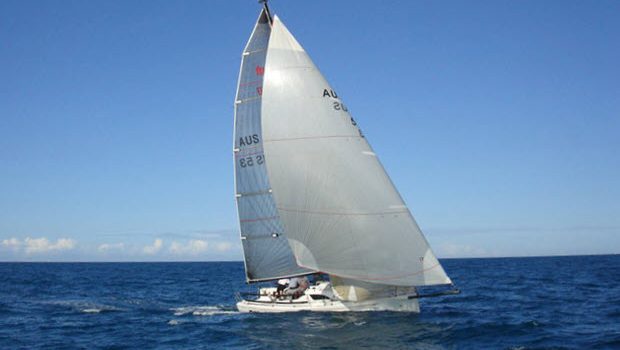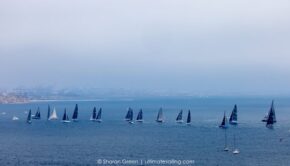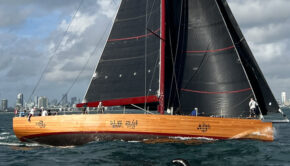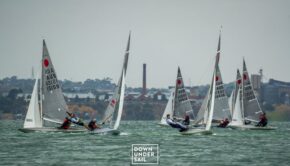Better assessing Code Zero performance
Published on February 5th, 2020
While the type of sails needed on a windward-leeward course is fairly well-defined, these sails struggle to cover the full range of wind angles on a distance race.
In the absence of sail restrictions, a lot of money can be spent on specialty sails to better fill this range, particularly when handicap systems are not staying ahead of their benefit.
In this report by Ullman Sails, they provide an update on how the ORC rule is seeking to better address this situation.
For years, the Code Zero, a flatter, more triangular-shaped sail for close reaching, has somewhat circumvented rating rules.
Designed to fit within measurements for boats with non-overlapping genoas, the Code Zero measured in as a relatively narrow, flat spinnaker that could essentially be almost three times the size of a non-overlapping jib, whilst attempting to maintain a similar shape to a reaching genoa.
However, this is set to change due to new rating rules from the Offshore Racing Congress (ORC). Amongst the summary of changes for 2020 that emerged from the Annual General Meeting of the Offshore Racing Congress (ORC) held in October last year was that:
“For asymmetric spinnakers with SHW/SFL in range of 0.75 – 0.85 aerodynamic forces are calculated with both coefficients for the spinnaker and for the headsail set flying with one giving faster boat speed taken as final.”
What this essentially means, is that the new rule does not make the 75% mid-girth Code Zero illegal under the ORC rules but what has changed is the aerodynamic evaluation of such sails.
This is an effort to more accurately reflect their performance and as a consequence could result in a potential increase in rating for boats carrying such sails, which might lead to a different approach going forward.
The release of the updated Velocity Prediction Program (VPP) by the ORC in January has allowed test certificates to be run and the full extent of the rating changes to be assessed. The changes are not inconsequential!
In the recently completed Rolex Sydney Hobart Race, a very well placed TP52 had an elapsed time of approximately 57 hours. Under the new VPP the “penalty” for carrying the Code Zero would be an additional 40 minutes or about a 0.847% increase on corrected time.
Of course, to not have the Code Zero onboard for a coastal or long-distance race has the potential to diminish performance and the question is whether the existing 75% mid-girth Code Zero is the best approach under the new VPP.
So, what does this mean for the future of the Code Zero sail? Here are some points to consider as we move forward:
• Many boats have a 75% mid-girth Code Zero in their sail inventory and they have proven very effective performance-wise. These sails will not disappear overnight with the rating change.
• The ORC aims to be accurate with their ratings and have consequently adjusted the VPP. It will be interesting to assess the accuracy of that adjustment out on the racecourse.
• In the meantime, sailmakers and sail designers, such as those at Ullman Sails, will be having a very close look at how to minimize the “penalty” for carrying a Code Zero style sail under the new rule.
Finally, Ullman Sails sail designers, working under other rules such as the USA ORR rule have already been striving to produce flying sails that, whilst not able to circumvent the new ORC rule, do offer an alternative approach that may prove useful. Interesting times!









 We’ll keep your information safe.
We’ll keep your information safe.